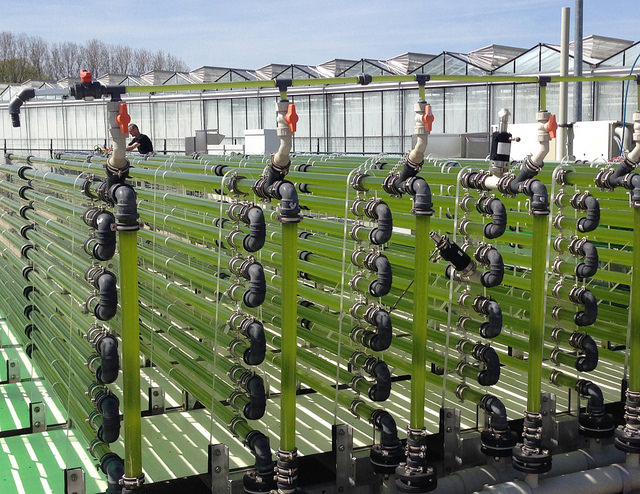Photobioreactor
Basics
- A Bioreactor optimized for phototrophic microorganisms
- Main use is for cultivation of Microalgae
- Oxygen Concentration, Nutrient Depletion, and Biofilm based blockages are the main issues
Types
- Tubular (Clear Tubing)
- Plate (uses angled plates)
- There are various methods of arranging the plates or tubes for optimum use such as:
- "pyramid" type plates
- "christmass tree" type tubular systems (a winding coil)
- Porous Substrate Bioreactor - this may be best used with an oil secreting algae
- Lab Scale Units (most often modified standard bioreactors
From Mathew Kolar
Most modern reactors use a simple transparent plastic tank in various shapes. Unfortunately, the tanks themselves tend to be expensive, and have low yields. I believe that the PBR needs to move aways from the masses of transparent plastic, its a big item on the bill of materials of any project. Opaque plastic is nearly 5 times cheaper. This is why the most successful method today has been the standing pond method, but it is very land intensive, and highly subject to acts of god. The only pieces of transparent plastic on those are the thin sheet on top the the pools to keep foreign microbes out. Unfortunately, none of these methods have been price competitive with the going price for oil.
I believe the secret to profitable production lies in the effiecient distribution of light. The optimal concentration of light for the blooming of algae is actually about 10% intensity of sunny day light. This should mean that the algae in current photobioreactors are not blooming efficiently, retarding yields with solar overexposure. Generally, you can only make a PBR about 6 inches deep, as the opacity generated by a blooming algae cluster becomes too great beyond that depth to allow any light to pass through to algae underneath. This greatly limits the volume of the optimum grown zone present in the reactor. The challenge is making an inexpensive device to collect the sunlight and distribute it at its proper intensity over a maximum volume of growth solution. This is what I have been working on.
See Also
- Biofuel
- Microbial Fuel Production
- Raceway Pond - a more land intensive alternative
